
 My musical taste is wide and varied (if you hadn’t figured that out by now), but one of my favorite styles is folk, which then connects to bluegrass, some elements of country, and celtic. My Uncle Tom had similar tastes, and many years ago he introduced me to a favorite musical of his, The Robber Bridegroom (book and lyrics by Alfred Uhry, music by Robert Waldman, adapted from the novella by Eudora Welty, based on an even older folktale). Especially for when it was first produced in 1975, it was a rarity among Broadway musicals, for it had a country and bluegrass score, with the musicians on the stage. I can count the musicals that have done this on one or two hands, the latest being last season’s Bright Star with a score by bluegrass artist and comedian Steve Martin.
My musical taste is wide and varied (if you hadn’t figured that out by now), but one of my favorite styles is folk, which then connects to bluegrass, some elements of country, and celtic. My Uncle Tom had similar tastes, and many years ago he introduced me to a favorite musical of his, The Robber Bridegroom (book and lyrics by Alfred Uhry, music by Robert Waldman, adapted from the novella by Eudora Welty, based on an even older folktale). Especially for when it was first produced in 1975, it was a rarity among Broadway musicals, for it had a country and bluegrass score, with the musicians on the stage. I can count the musicals that have done this on one or two hands, the latest being last season’s Bright Star with a score by bluegrass artist and comedian Steve Martin.
We first saw The Robber Bridegroom in 2011 at ICT Long Beach (FB); it tends to be rarely done. Last week I learned that LA Valley College (FB)’s Department of Theatre Arts was doing a student production of the show (FB). We decided to give it a try, and squeezed it into the weekend. As I wrote back in 2011:
[The Robber Bridegroom] tells the fable of the Robber Bridegroom in 1795 in Rodney’s Landing, Mississippi. It is a fable about, as the song says, “A gent and a robber all in one, A girl who made the moon burn like the sun. A greedy witch, A man that rich. A brain that big, A filthy pig. A talkin’ head. … Once upon a Natchez Trace!” So let’s meet the characters. The “gent and robber all in one” is Jamie Lockhart, a gentleman robber who is also the Bandit of the Woods. He charms to get in, and takes what he wants. The girl who made the moon burn like the sun is Rosamond, the beautiful daughter of the “man that rich”, Clemment Musgrove, a wealthy planter, and the step-daughter of the “greedy witch”, Salome, current wife of the planter. Rosamond wants love, and finds it with the Bandit of the Woods, but doesn’t want to get married to the gentleman her father prefers, Jamie Lockhart, who wants to marry Rosamond not for love, but for the plantation. The “brain that big” refers to the brain the size of a pea belonging to “Goat” the simpleton hired by Salome to kill Rosamond to gain the reward of a suckling pig. The “filthy pig” refers to Little Harp, a thief and robber who travels the country with the talkin’ head of his brother, Big Harp, and who plans to steal both the gold and the girl of the planter. “Once upon a Natchez Trace”, of course, refers to the historic forest trail that connects landings like Rodney MS with the mouth of the Mississippi in New Orleans LA. As you can imagine from this cast of characters, we have a backwoods story of greed, love, lust, and desire. Quite a fun tale.
This production, as I noted earlier, was a student production under the direction of Cathy Susan Pyles (FB), with musical direction by Evan J. Marshall (FB). The fact that this was a student production means the range of talent and experience is wide and varied. We had some performers for whom this was their first time on stage … ever. We had some who had been in a fair to large number of amateur and other unspecified shows. In other words, this was a cast with a range of raw talent in both performing and singing. The latter is significant, for LAVC does not have a formal musical theatre program, and so there was not a formal effort to improve and strengthen vocal quality with this show (at least noted in the program, as there was no credit for vocal coaching, and no vocal coaches on the LAVC faculty). Again, raw talent up and coming, gems that required various levels of polishing. One doesn’t go into a show like this expecting virtuoso Broadway-caliber performance; one expects to be able to note strengths and weaknesses. Hopefully, the performers expect this as well, taking any weaknesses as areas to work on for the future. And thus, the caveat is ended.
In the lead positions were Jacob Reynolds/FB as Jamie Lockhart and Tiffany Fuller/FB as Rosamund. Both were good (at least to my untrained eye) on the performance side — believable as their characters, having fun with their roles. I was particularly smitten by Fuller’s performance (and not just due to her smile and other charms) — writing this up I discovered she was from Kentucky, and that clearly showed in the accent and country mannerisms she brought to the role. Both had good singing voices that were pleasant to listen to, but that could use a tad more strength and volume.
Rosamund’s family was portrayed by Nicholas Goodreau/FB as Clemment Musgrove (Rosamund’s father) and Victoria Pizarro/FB as Salome (Rosamund’s stepmother). I quite enjoyed Goodreau’s performance — he had the right bearing and style for the role. For the most part his singing was good, especially in some harmonies, although there were just a few time he was a little off. This was Pizarro’s first time on stage, according to her credits. Especially in consideration of that, her acting performance was strong and it was clear she was having fun. Where the inexperience showed was vocally, although it was unclear the extent to which that was part of her character. Her voice was a bit weaker and all over the map at times. An area to work on.
The other major characters were R. J. Godinez/FB (Little Harp), Robert Butler/FB (Big Harp), Tristan Samson/FB (Goat), and Cameron Caddell (FB) (The Raven). As his character, Butler’s performance was more limited (he was a talking head in a box, after all); but the others were all strong as their characters. I was particularly taking with Godinez and Samson’s performances and characterizations; both also had good singing voices was reasonable strength. I did really like Caddell’s voice as the Raven — it was quite lovely — and her peformance was remarkably athletic in all the climbing and jumping and movement she had to do.
Most of the cast also played members of the ensemble. Other ensemble members and minor characters were: Serena El-Farra (FB) (Ensemble, Goat’s Mother); Carlos A. Gomez Jr./FB (Ensemble, The Caller); Ann Kriss/FB (Ensemble); Chase Mac Leay/FB (Ensemble, Landlord); Mariam Petrosyan/FB (Ensemble, Goat’s Sister); Zihan (Layla) Zhao/FB (Ensemble). There was quite a skill mix here, but all were clearly having fun and doing their best to be characters at the given place and time. Singing-wise, there was a wide range of performances, from strong singers to weak. There was also a good variety of shapes and looks. A few specific notes: Although she didn’t have a large singing role, the few times I could single out El-Farra’s voice, I was quite impressed with it. On the other end of the spectrum, Zhao needs to work a bit on her voice. Not singing (as I don’t recall being able to single out her singing voice), but more moving past her native accent to get the words out a little bit clearer and stronger. I also recall that I enjoyed Petrosyan’s voice the one or two times I could pick it out, and thinking Kriss could have made an interesting Salome.
On-stage music was provided by a four-piece bluegrass group led by Evan J. Marshall (FB) on Mandolin. Rounding out the group were Mike Ley (FB) on Bass Fiddle, Alex Finazzo (FB) on Guitar, and Hiro Goto (FB) on Fiddle. Jean Sudbury (FB) does the fiddle on March 25 (tonight). I was very impressed by the music during the show, and will actually look for albums from the Mandolin and Guitar artists.
There was no specific choreography credit.
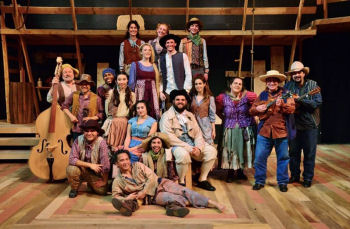 Turning to the production and creative side: The scenic and lighting design by Jennifer L. Read (FB) was quite strong. I still recall the scenic design of the ICT production, with a large metal scaffoding in a U-shape with a large center portion. Read’s design was very different: very wooden and muscular, with a wood floor, sawhorses and planks, and a wooden structure along the back of the stage with ladders and ropes and such. She much of had fun shopping at Home Depot or Lowes :-). It worked quite well and was used in many creative ways by the cast to create all sorts of objects. The lighting design was equally strong, combining use of Lekos and what appeared to be some LED lights and spots to establish mood and focus attention. Mary Reilly‘s costume design seemed appropriately rural and rustic, as befits Rodney MS at the end of the 18th century. The costumes also served to distinguish the characters well and were quite fun to watch. To the right is a picture of the cast and musicians, which also shows the wonderful set and costumes (picture snarfed from the director’s FB page — and shows L-R, (back row) A. Kriss, C. Caddell, C. Mac Ley; (back +1) T. Fuller, J. Reynolds; (back + 2) M. Ley, H. Goto, R. Butler, Z. Zhao, V. Pizarro, N. Goodreau, M. Petrosyan, S. El-Farra, E. Marshall, A. Finazzo; (front -1) C. Gomez, R. J. Godinez; (front) T. Samson).
Turning to the production and creative side: The scenic and lighting design by Jennifer L. Read (FB) was quite strong. I still recall the scenic design of the ICT production, with a large metal scaffoding in a U-shape with a large center portion. Read’s design was very different: very wooden and muscular, with a wood floor, sawhorses and planks, and a wooden structure along the back of the stage with ladders and ropes and such. She much of had fun shopping at Home Depot or Lowes :-). It worked quite well and was used in many creative ways by the cast to create all sorts of objects. The lighting design was equally strong, combining use of Lekos and what appeared to be some LED lights and spots to establish mood and focus attention. Mary Reilly‘s costume design seemed appropriately rural and rustic, as befits Rodney MS at the end of the 18th century. The costumes also served to distinguish the characters well and were quite fun to watch. To the right is a picture of the cast and musicians, which also shows the wonderful set and costumes (picture snarfed from the director’s FB page — and shows L-R, (back row) A. Kriss, C. Caddell, C. Mac Ley; (back +1) T. Fuller, J. Reynolds; (back + 2) M. Ley, H. Goto, R. Butler, Z. Zhao, V. Pizarro, N. Goodreau, M. Petrosyan, S. El-Farra, E. Marshall, A. Finazzo; (front -1) C. Gomez, R. J. Godinez; (front) T. Samson).
Rounding out the production credits were: Victor Gonzalez/FB – Production Stage Manager; Mark Svastics (FB) – Technical Director; Jade Hill/FB and Ryan Schmitt/FB – Assistant Stage Managers.
The Robber Bridegroom (FB) continues at LA Valley College (FB) throughout this weekend, with matinees today and Sunday, and an evening performance tonight and Sunday night. Tickets are available at the door or via BrownPaperTickets.
🎩 🎩 🎩
Ob. Disclaimer: I am not a trained theatre (or music) critic; I am, however, a regular theatre and music audience member. I’ve been attending live theatre and concerts in Los Angeles since 1972; I’ve been writing up my thoughts on theatre (and the shows I see) since 2004. I do not have theatre training (I’m a computer security specialist), but have learned a lot about theatre over my many years of attending theatre and talking to talented professionals. I pay for all my tickets unless otherwise noted. I am not compensated by anyone for doing these writeups in any way, shape, or form. I currently subscribe at Cabrillo Music Theatre (FB), the Hollywood Pantages (FB), Actors Co-op (FB), the Chromolume Theatre (FB) in the West Adams district, and a mini-subscription at the Valley Performing Arts Center (VPAC) (FB). Through my theatre attendance I have made friends with cast, crew, and producers, but I do strive to not let those relationships color my writing (with one exception: when writing up children’s production, I focus on the positive — one gains nothing except bad karma by raking a child over the coals). I believe in telling you about the shows I see to help you form your opinion; it is up to you to determine the weight you give my writeups.
Upcoming Shows: This evening our gears shift to Gershwin, with the touring company of An American in Paris at the Hollywood Pantages (FB) on Saturday. April starts with Cats Paw at Actors Co-op (FB) and a concert with Tom Paxton and the DonJuans at McCabes Guitar Shop (FB). The next day brings the Colburn Orchestra at the Valley Performing Arts Center (VPAC) (FB). The weekend of April 8 brings Kurt Vonnegut’s The Sirens of Titan at Sacred Fools Theatre (FB). Mid-April brings Doc Severinsen and his Big Band at Valley Performing Arts Center (VPAC) (FB) on April 13, followed by Animaniacs Live at the La Mirada Performing Arts Center (FB) over the weekend. That will be followed on the penultimate weekend of April with Sister Act at Cabrillo Music Theatre (FB). The last weekend of April has two holds: one for the Renaissance Pleasure Faire, and one for Uncanny Valley at ICT Long Beach (FB) [we’re just waiting on Goldstar]. Lastly, looking to May, the schedule shows that it starts with My Bodyguard at the Hollywood Pantages (FB) the first weekend. It continues with Martha Graham Dance and American Music at the Valley Performing Arts Center (VPAC) (FB). The third weekend brings the last show of the Actors Co-op (FB) season, Lucky Stiff, at Actors Co-op (FB). May concludes with Hello Again at the Chromolume Theatre (FB). As for June? Three words: Hollywood Fringe Festival (FB). That, barring something spectacular cropping up, should be the first half of 2017.
As always, I’m keeping my eyes open for interesting productions mentioned on sites such as Better-Lemons, Musicals in LA, @ This Stage, Footlights, as well as productions I see on Goldstar, LA Stage Tix, Plays411 or that are sent to me by publicists or the venues themselves. Note: Lastly, want to know how to attend lots of live stuff affordably? Take a look at my post on How to attend Live Theatre on a Budget.



 If you’ve actually been reading these theatre writeups to the end, you’ll know we have tickets for the
If you’ve actually been reading these theatre writeups to the end, you’ll know we have tickets for the 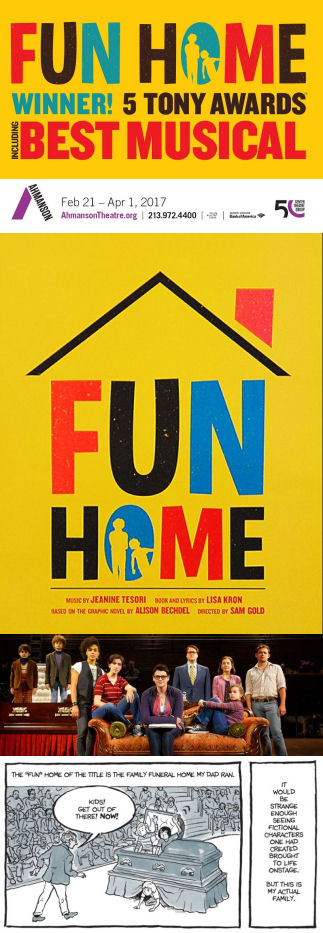
 There’s a quote that occurs in one of the first songs of the musical
There’s a quote that occurs in one of the first songs of the musical 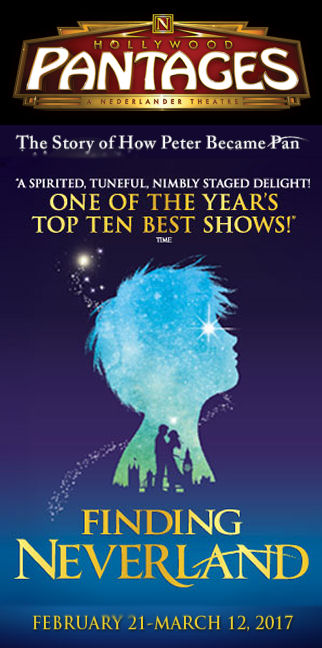
 From where does inspiration arise? What gives the author the impetus to write a story, particularly an imaginative story? These are the questions that underlie the musical
From where does inspiration arise? What gives the author the impetus to write a story, particularly an imaginative story? These are the questions that underlie the musical 
 As you may recall, I’ve been trying to predict
As you may recall, I’ve been trying to predict 
 If you haven’t figured it out by now, we don’t only go to theatre. We go to concerts — folk, jazz, classical, eclectic. But my first musical taste — the first artists that I truly said were my favorite — were
If you haven’t figured it out by now, we don’t only go to theatre. We go to concerts — folk, jazz, classical, eclectic. But my first musical taste — the first artists that I truly said were my favorite — were 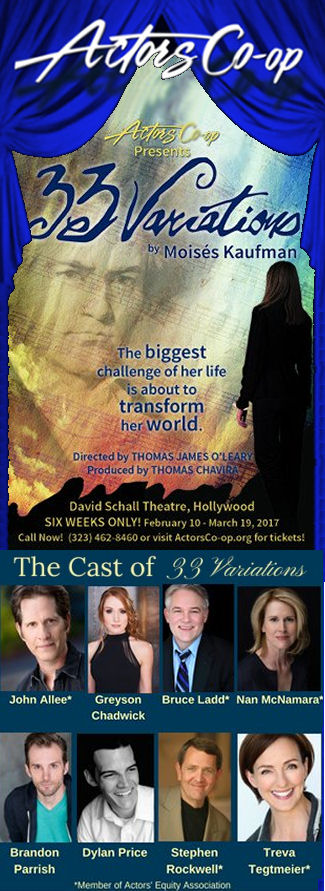
 Almost
Almost 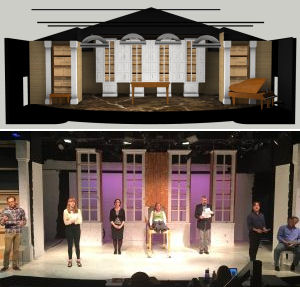 The production was elegantly adapted for the small stage. Of the Ahmanson production, I wrote: “The primary motif was that of an archival room with shelves and shelves of archive boxes, together with movable screens made up of pages of music. Upon these were occasionally projected movements, scenery, and movements.” This production was unable to do that; instead they used the design of the set you see to the right: four windowed panels with doors between them. These panels could be translucent; the could show archival books. The doors could house projections. On the side were brick walls that slid open to expose archival books; there was also a Murphy bed for one scene behind the books. Credit for this design goes to
The production was elegantly adapted for the small stage. Of the Ahmanson production, I wrote: “The primary motif was that of an archival room with shelves and shelves of archive boxes, together with movable screens made up of pages of music. Upon these were occasionally projected movements, scenery, and movements.” This production was unable to do that; instead they used the design of the set you see to the right: four windowed panels with doors between them. These panels could be translucent; the could show archival books. The doors could house projections. On the side were brick walls that slid open to expose archival books; there was also a Murphy bed for one scene behind the books. Credit for this design goes to 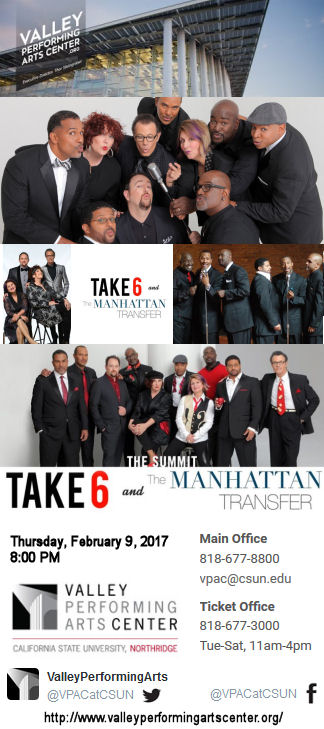
 One of the advantages of concert reviews is that they are much easier to write. There’s no plot; no story. Nothing to analyze or compare and contrast. No incredibly large ensemble to write up (usually). There’s not even a requirement to write up a set list, especially if I am less familiar with the group’s repertoire to know the names of every song. I can just sit back and enjoy the music.
One of the advantages of concert reviews is that they are much easier to write. There’s no plot; no story. Nothing to analyze or compare and contrast. No incredibly large ensemble to write up (usually). There’s not even a requirement to write up a set list, especially if I am less familiar with the group’s repertoire to know the names of every song. I can just sit back and enjoy the music.